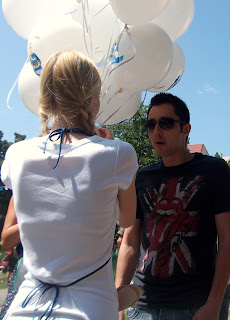"Yikes! I Can't Believe You Just Said That!"- Great Writing Needs Great Dialogue
 |
| Eavesdrop, if you really want to get the hang of it. Photo Copyright Janet Cameron |
The main purposes of dialogue are:
- to move the story forward
- to help show character and to impart other information.
The qualities required for writing believable dialogue are to sound natural, but interesting. The paradox is that dialogue in writing has to be edited with precision and caution. Omit repetitions of superfluous material like “you see,” and “you know what I mean,” those casual, throw-away phrases we all use in everyday speech. On the other hand, let your character speak ungrammatically, if that is part of their persona.
Here is the start of a story by writer, Paul Curd. It’s told in the first person, in the distinctive style of the narrator’s voice:
“It was a Tuesday he called. I know it was a Tuesday because I’d just got back from the shops and I always go down the shops of a Tuesday because that’s the day I draw my pensions.
“Mrs. Parsons?” he says.
“Who wants to know?” I say.
“Can I come in?” he says.
“Got any ID?” I say."
Already, in just a few, very simple phrases, you know quite a lot about these two characters, the pushy salesman, the suspicious pensioner housewife.
Patterns and Verbal Mannerisms in Conversation
Listen to radio plays. Eavesdrop on public transport, in restaurants or bars. Analyse speech patterns, catch phrases and verbal mannerisms.
Try to get the mood. Short rapid bursts of speech show anger, while other sections of dialogue might work better with longer sentences. Most people, except the most highly educated, don’t use very long sentences with complex sub-clauses.
Use conversation tags (he said, she said) sparingly, and if you can get away with it without confusing the reader, leave them out. You can also show who’s speaking through pieces of action. Impart information clearly and only include conversation significant to the story or that shows character.
Sometimes, dull but necessary information, can be brought alive by using dialogue instead of ordinary prose.
Use contractions like "wouldn't," "can't," and "didn't."
Learn from Professional Writers
Sometimes, the dialogue simply runs on in the body of the text, (although this can be confusing if you have a fair amount of dialogue in your work) while other writers prefer to start a new line or paragraph the moment a different character begins to speak.Most writers use speech marks, but some do not, for example, the Irish writer, Frank McCourt. (Angela's Ashes.) It's up to you, but it's probably best to learn the rules before you start to break them.


Comments